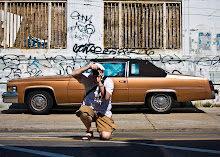"Good to know your artistic vision. I wonder if you could comment on the reason you take photos, what you want to give your audience, what you want the viewer to come away with."
Interesting questions, questions whose simplicity mask the difficulty I have in answering them. I thought I would take the opportunity of this post to publicly struggle with them. I'll post a sample picture to use as a concrete example of one of my photos to anchor the discussion.
Here is another photo I took at the University of Charleston, one of a series I took in their practice lab for the nursing program. I call this picture "Patient X3"

Taking Matt's questions one at a time, it's hard for me to answer the generic question "why do you take photos?" because it's just an urge that I'm not sure is analyzable. I see certain images and know that I want to save them. I can't draw or paint, so the camera as the most democratic of all art tools is my only option.
A corollary to that question though, and one that is only slightly more answerable, is "why did you take *this* picture?" What is it that drew me to this room full of mannequins dressed up like hospital patients? I remember walking down the hallway, going to teach a class when out of the corner of my eye, I saw this hospitalized dummy staring at me with those dead eyes and I felt a chill run through my body. It was a very eerie image just glimpsed with my peripheral vision. This is how I often find my best pictures, from the edge of my vision, unexpected and unbidden. Why I feel drawn to creepy, disturbing images is a topic for another post, but I think that these unsettling images speak volumes about cultural taboos and what we hide from ourselves as a society. That unfocused eeriness--it's only a mannequin in a bed, why should it be so disturbing?--is what drew me to this image.
I'll take Matt's second and third questions as one since they ultimately deal with the relationship of the artist and the viewer. What do I hope to communicate with the viewer and what do I want them to take away from this image? In an certain way, I never think about the viewer when I'm taking a photograph, unless you count me as a viewer. I take pictures of images that I'm drawn to, so I guess an unspoken assumption behind my approach is that others will have a similar pull towards these images and a similar interest in exploring the disturbing and creepy.
What do I want them to take away? I have to say, this is another issue that seldom enters my mind in a conscious way. Partly this is because it touches on a very vexing postmodern dilemma. If as Barthes, Foucault and others say, the author (or artist generally) is dead, then what position is that creator in to dictate what the audience takes away from the artwork? As I've already said, I'm not always able to fully articulate what message or meaning *I* take away from this image, so in a world where the viewer/reader is fully in charge of finding meaning in/from art, how am I going to be able to communicate my "take-home message" to people who look at this photograph? I would love to hear how others view this image. One of the best things about art photography for me is how many different ways viewers can react to it. So I find Matt's questions both interesting and frustrating because like most good questions, I don't have a definitive answer. The discussions, the back and forth, is all we have. Take care.
RAV

1 comment:
The photo you've chosen as an example hardly represents the creepiest sight at UC, but forget about administrators. Mannequins look like people, so when posed in hospital gowns and beds, they remind us of human frailty.
What makes the photo intriguing is that it is not macabre, but "mock"abre, if you will. To show images of real sickness would create a reaction much different than the amusement I feel seeing the glassy-eyed mannequin with the cheap wig and vacant stare, symbolic of the human condition.
I'm not sure if this addresses the questions you raised in response to my questions. In fact, in my previous comment, I just wanted to know if you took photos for money and what pictures you most hoped people would buy, but you turned it into something philosophical.
Post a Comment